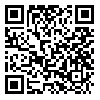Volume 9, Issue 1 (1-2022)
jbrms 2022, 9(1): 1-9 |
Back to browse issues page
Download citation:
BibTeX | RIS | EndNote | Medlars | ProCite | Reference Manager | RefWorks
Send citation to:



BibTeX | RIS | EndNote | Medlars | ProCite | Reference Manager | RefWorks
Send citation to:
Khabbaz Kababi M H, Rezaeian N, Negahban Sioki H, Y'aghoubi A. Effect of Resistance Training along with Electrical Muscle Stimulation on Serum Levels of Some of the Molecular Markers of Muscle Hypertrophy in Male Athletes
After Anterior Cruciate Ligament Surgery. jbrms 2022; 9 (1) :1-9
URL: http://jbrms.medilam.ac.ir/article-1-549-en.html
URL: http://jbrms.medilam.ac.ir/article-1-549-en.html
Department of Physical Education, Bojnourd branch, Islamic Azad University, Bojnourd, Iran , rezaeian.n@gmail.com
Abstract: (3441 Views)
Introduction: To the best of our knowledge, no study has been evaluated the effect of a combination of resistance training and electrical muscle stimulation (EMS) on muscle hypertrophy factors in injured athletes. The aim of this study was to investigate the effect of EMS on serum levels of some molecular markers of muscle hypertrophy in male athletes after anterior cruciate ligament surgery (ACL).
Materials and Methods: Twenty male athletes after ACL surgery were selected and randomly divided into two groups: EMS and control (10 subjects in each group) of. Subjects in both groups performed resistance training (at intensity of 30-70 percentage of 10-repetition maximum, 2-4 sets). Whereas, subjects in EMS group performed resistance training with EMS at frequency of 35-70 Hz. Blood samples were collected before and 48 hours after the last training session to measure serum levels of sirtoin-1 (SIRT1), visfatin and nitric oxide (NO).
Results: The finding showed that 12 weeks of EMS significantly increased serum levels of SIRT1 (P < 0.001), visfatin (P = 0.02) and NO (P = 0.01) in post-test compared to the pre-test. The results also revealed that the EMS training significantly increased SIRT1 (P < 0.001) and NO (P = 0.021) levels in comparison with the control group. However, there was no significant difference between two groups in visfatin levels (P > 0.05).
Conclusion: The results suggest that EMS training could possibly be a good alternative to the traditional resistance training to stimulate factors related to muscle protein synthesis.
Materials and Methods: Twenty male athletes after ACL surgery were selected and randomly divided into two groups: EMS and control (10 subjects in each group) of. Subjects in both groups performed resistance training (at intensity of 30-70 percentage of 10-repetition maximum, 2-4 sets). Whereas, subjects in EMS group performed resistance training with EMS at frequency of 35-70 Hz. Blood samples were collected before and 48 hours after the last training session to measure serum levels of sirtoin-1 (SIRT1), visfatin and nitric oxide (NO).
Results: The finding showed that 12 weeks of EMS significantly increased serum levels of SIRT1 (P < 0.001), visfatin (P = 0.02) and NO (P = 0.01) in post-test compared to the pre-test. The results also revealed that the EMS training significantly increased SIRT1 (P < 0.001) and NO (P = 0.021) levels in comparison with the control group. However, there was no significant difference between two groups in visfatin levels (P > 0.05).
Conclusion: The results suggest that EMS training could possibly be a good alternative to the traditional resistance training to stimulate factors related to muscle protein synthesis.
Type of Study: Research |
Subject:
Orthopedics
Received: 2020/08/1 | Accepted: 2020/10/5 | Published: 2022/01/11
Received: 2020/08/1 | Accepted: 2020/10/5 | Published: 2022/01/11
Send email to the article author
| Rights and permissions | |
 |
This work is licensed under a Creative Commons Attribution-NonCommercial 4.0 International License. |





